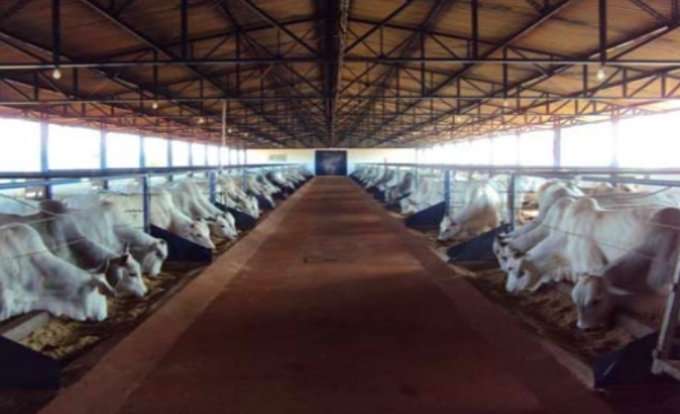Nutrition that increases productivity in intensive livestock breeding

Improving the productivity of Brazilian livestock means not only finding ways to make the cattle produce more meat or more milk, but also addressing issues such as diseases. One of those, ruminal acidosis, plays a major role in livestock breeding since it mainly strikes animals kept in intensive farming systems. It causes a high mortality rate, even in treated cases.
The affected animal experiences an intense production of lactic acid and a decrease in the pH of the rumen, the first compartment of the stock of ruminants, also known as a paunch. The excess of lactic acid ends up fermenting and causing the viscus to swell with gases, which can lead to suffocation.
In a study conducted by Danilo Domingues Millen and Cassiele Aparecida de Oliveira, researchers from Sao Paulo State University (UNESP) in Brazil, 37.5 percent of feedlot cattle nutritionists identified acidosis as the second most important health problem after respiratory problems (identified by 40.4 percent of nutritionists) but well ahead of cysticercosis (identified by 9.4 percent of the nutritionists).
At FAPESP Week Nebraska-Texas, held on September 18-22 in the cities of Lincoln, Nebraska and Lubbock, Texas, Millen presented the outcome of surveys completed by nutritionists and the findings of research studies he is currently conducting on the feeding of ruminants. The data provide a clearer understanding of the developments in nutritional recommendations and management practices in the production of feedlot cattle in Brazil.
"We conducted three studies in 2009, 2011 and 2015 based on surveys containing nearly 80 technical questions directed at nutritionists who work with feedlot cattle all over Brazil," said Millen about the studies. In Brazil, the first study involved 31 nutritionists and the other two studies involved 33. They are responsible for approximately of 90 percent of all feedlot cattle in Brazil."
Common fattening method tends to stimulate acidosis
The studies with nutritionists indicated that the quantity of feed concentrate has increased since 2009. This means the use of higher amounts of carbohydrates, since ruminants employ lactic acid produced in the rumen (a sort of fermentation chamber) in order to obtain the energy they need to produce milk or gain weight. "Acid needs to be formed so it can be absorbed through the wall of the rumen, go to the liver and be used by the animal as energy," said Millen. "In order to increase productivity, the feed needs to have better quality products, but these products are also carbohydrates that ferment very quickly, so that the animal gains more weight and produces more milk faster, and this cannot be done through grazing."
Carbohydrates, however, stimulate problems such acidosis, caused by the excess of fermentation, say the scientist. "When the acid production rate is much higher than the absorption rate [the rate of withdrawal from the rumen], a disorder known as tympanism occurs as a result of acidosis, and the animal becomes bloated by the abnormal accumulation of gases in the stomach. The rumen increases in size and the animal experiences difficulty breathing and can die."
Additives that influence fermentation
One alternative to alleviate this problem is to use feed additives, which cause the animal to produce fewer acids that can cause problems.
"Our group has researched additives, which are micro-ingredients administered to the animals in doses of one to two grams per day. They play a beneficial role in fermentation in the rumen. Included among the acids produced in the rumen are weak acids and strong acids. Weak acids are more beneficial in helping the animals gain weight and produce milk. In other words, they have less capacity to reduce pH. Among strong acids are what is known as lactic acid, which the animal has less ability to absorb," Millen said.
"We use additives such as ionophores [molecules soluble in lipids] that kill some of the bacteria that lead to the production of lactic acid. By using these additives, we can control the production of lactic acid and the animal is much less likely to have acidosis and tympanism," he said. Today, most feedlot cattle producers in Brazil use ionophores in the feed.
The researchers in Millen's group found evidence that Nelore cattle may be more sensitive to acidosis that other breeds such as those produced in the United States and Europe. Future studies will be carried out to investigate the issue. Another focus of the group is the study of cattle adaptation methods. For example, the researchers attempted to ascertain the ideal transition time with regard to grazing animal nutrition in containment areas.
"Fourteen days is the minimum window we have observed for removing the animal from pasture and ensuring that it eats close to 80 percent or 85 percent concentrate. It is the interval for transitioning the animal—changing its diet gradually in an effort to prevent digestive problems like acidosis," Millen said.
Provided by FAPESP

















